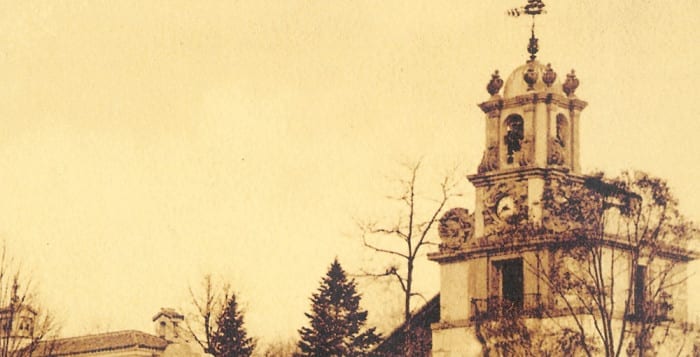Museum curator publishes history of Vanderbilt Eagle’s Nest estate
Book launch to be held at annual members reception
Stephanie Gress knows more about the history of William K. Vanderbilt II than most people. As director of curatorial affairs for the Suffolk County Vanderbilt Museum for eight years¸ she is the steward of Mr. Vanderbilt’s legacy, his estate, mansion and museum collections.
Using that extensive knowledge and a trove of rare photographs from the Vanderbilt archives, Gress created a richly illustrated book, Eagle’s Nest: The William K. Vanderbilt II Estate. Its cover photo, from the Vanderbilt Museum archives, is by the noted New York City photographer Drix Duryea. The picture shows the bell tower and one wing of the mansion in the late 1920s, before the Memorial Wing enclosed the courtyard.
The book was published June 1, by Arcadia Publishing in South Carolina, the leading local-history publisher in the United States. The Vanderbilt will celebrate the book’s official launch at its annual Members Reception on Sunday, June 28.
Gress noted that the release of the book is well-timed, as the development of the Eagle’s Nest estate is in its centennial decade: “This book tells readers about the Vanderbilt family, why Mr. Vanderbilt came here and built the estate, how the place changed over the years based on changes in his life, and how we use it today.”
Vanderbilt, known as Willie K., purchased the first parcel of what would become 43 acres for his Northport Bay waterfront estate in 1910, and hired the eminent New York City architectural firm of Warren & Wetmore to design and build it. The firm had designed Grand Central Terminal in Manhattan for Cornelius Vanderbilt’s New York Central Railroad. Cornelius was William’s great-grandfather.
Eagle’s Nest is the easternmost Gold Coast mansion on Long Island’s affluent North Shore. From 1910 to 1944, the palatial, 24-room, Spanish-Revival mansion was Willie K.’s summer hideaway. There he hosted intimate gatherings of Vanderbilt family members and close friends — including the Duke and Duchess of Windsor, legendary golfer Sam Snead, and the Tiffanys.
“Mr. Vanderbilt embarked on many of his legendary world voyages from Eagle’s Nest,” Gress said, “along with a 50-person crew and a few, fortunate invited passengers.” During his travels, she said, he collected natural-history and marine specimens and ethnographic artifacts from around the globe.
With the help of scientists and experts from the America Museum of Natural History, he created exhibits in the galleries at the estate to showcase his collections. Mr. Vanderbilt died in 1944. His wife Rosamund continued to live in the mansion until her death in 1947. Vanderbilt’s will bequeathed his estate and museum to Suffolk County. In 1950, it was opened to the public as the Suffolk County Vanderbilt Museum. The estate is listed on the National Register of Historic Places.
“Much to the credit of Willie K., Eagle’s Nest continues to fulfill his intended mission,” Gress wrote in the conclusion of the book. “Visitors from all over the world come to see one of the few remaining Long Island Gold Coast estates with its original furnishings. His collections remain on display and they continue to fascinate and entertain.”
Eagle’s Nest is available for purchase on the Arcadia Publishing, Amazon and Barnes & Noble websites, in the Vanderbilt Museum Gift Shop and in local bookstores.







